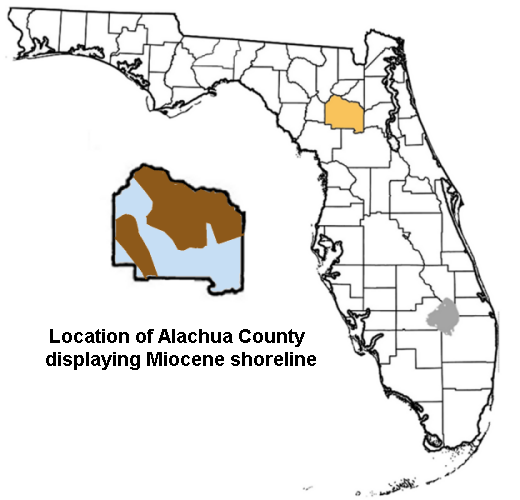|
Pachyarmatherium Leiseyi
''Pachyarmatherium'' is a genus of extinct large armadillo-like cingulates found in North and South America from the Pliocene and Pleistocene epochs, related to the extant armadillos and the extinct pampatheres and glyptodonts. It was present from 4.9 Mya to 11,000 years ago, existing for approximately . Taxonomy ''Pachyarmatherium'' was named by Downing and White (1995). Its type is ''P. leiseyi''. It was assigned to Dasypodoidea by Downing and White (1995), and tentatively to Glyptodontidae by McKenna and Bell (1997). A cladistic analysis performed by de O. Porpino et al. (2009) led to the conclusion that ''Pachyarmatherium'' is a sister group to a clade consisting of Glyptodontidae and Pampatheriidae. Oliveira et al. (2013) suggest that ''Pachyarmatherium'' is a possible dasypodid. Fossil distribution of ''Pachyarmatherium'' ''P. leiseyi'' * Kissimmee River site, Tamiami Formation, Okeechobee County, Florida ~4.9—1.8 Mya. * Haile 16A Site, Alachua County, Fl ... [...More Info...] [...Related Items...] OR: [Wikipedia] [Google] [Baidu] |
Pliocene
The Pliocene ( ; also Pleiocene) is the epoch in the geologic time scale that extends from 5.333 million to 2.58See the 2014 version of the ICS geologic time scale million years ago. It is the second and most recent epoch of the Neogene Period in the . The Pliocene follows the Epoch and is followed by the Epoch. Prior to the 2009 ... [...More Info...] [...Related Items...] OR: [Wikipedia] [Google] [Baidu] |
Clade
A clade (), also known as a monophyletic group or natural group, is a group of organisms that are monophyletic – that is, composed of a common ancestor and all its lineal descendants – on a phylogenetic tree. Rather than the English term, the equivalent Latin term ''cladus'' (plural ''cladi'') is often used in taxonomical literature. The common ancestor may be an individual, a population, or a species (extinct or extant). Clades are nested, one in another, as each branch in turn splits into smaller branches. These splits reflect evolutionary history as populations diverged and evolved independently. Clades are termed monophyletic (Greek: "one clan") groups. Over the last few decades, the cladistic approach has revolutionized biological classification and revealed surprising evolutionary relationships among organisms. Increasingly, taxonomists try to avoid naming taxa that are not clades; that is, taxa that are not monophyletic. Some of the relationships between organisms ... [...More Info...] [...Related Items...] OR: [Wikipedia] [Google] [Baidu] |
Prehistoric Placental Genera
Prehistory, also known as pre-literary history, is the period of human history between the use of the first stone tools by hominins 3.3 million years ago and the beginning of recorded history with the invention of writing systems. The use of symbols, marks, and images appears very early among humans, but the earliest known writing systems appeared 5000 years ago. It took thousands of years for writing systems to be widely adopted, with writing spreading to almost all cultures by the 19th century. The end of prehistory therefore came at very different times in different places, and the term is less often used in discussing societies where prehistory ended relatively recently. In the early Bronze Age, Sumer in Mesopotamia, the Indus Valley Civilisation, and ancient Egypt were the first civilizations to develop their own scripts and to keep historical records, with their neighbors following. Most other civilizations reached the end of prehistory during the following Iron Age. T ... [...More Info...] [...Related Items...] OR: [Wikipedia] [Google] [Baidu] |
Prehistoric Cingulates
Prehistory, also known as pre-literary history, is the period of human history between the use of the first stone tools by hominins 3.3 million years ago and the beginning of recorded history with the invention of writing systems. The use of symbols, marks, and images appears very early among humans, but the earliest known writing systems appeared 5000 years ago. It took thousands of years for writing systems to be widely adopted, with writing spreading to almost all cultures by the 19th century. The end of prehistory therefore came at very different times in different places, and the term is less often used in discussing societies where prehistory ended relatively recently. In the early Bronze Age, Sumer in Mesopotamia, the Indus Valley Civilisation, and ancient Egypt were the first civilizations to develop their own scripts and to keep historical records, with their neighbors following. Most other civilizations reached the end of prehistory during the following Iron Age. T ... [...More Info...] [...Related Items...] OR: [Wikipedia] [Google] [Baidu] |
Hillsborough County, Florida
Hillsborough County is located in the west central portion of the U.S. state of Florida. In the 2020 census, the population was 1,459,762, making it the fourth-most populous county in Florida and the most populous county outside the Miami metropolitan area. A 2021 estimate has the population of Hillsborough County at 1,512,070 people with a yearly growth rate of 1.34%, which itself is greater than the populations of 12 states according to their 2019 population estimates. Its county seat and largest city is Tampa, Florida, Tampa. Hillsborough County is part of the Tampa–St. Petersburg, Florida, St. Petersburg–Clearwater, Florida, Clearwater Tampa Bay Area, Metropolitan Statistical Area. History Hillsborough County was created on January 25, 1834, from Alachua County, Florida, Alachua and Monroe County, Florida, Monroe Counties, during the Florida Territory, U.S. territorial period (1822–1845). The new county was named for Wills Hill, 1st Marquess of Downshire, Wills Hill ... [...More Info...] [...Related Items...] OR: [Wikipedia] [Google] [Baidu] |
Bermont Formation
The Bermont Formation is a geologic formation in Florida. It preserves mostly invertebrate fossils that date back to the Middle Pleistocene. Most of the fossils preserved are extant mollusk shells. It is mined commercially along with similar formations, to produce shell fill for construction. A lot of our information on the Bermont Formation comes from commercial mining operations. Due to the nature of Florida's flat landscape, paleontologists rely on commercial interest in mining to gain access to otherwise inaccessible specimens for study. Such is the case with the Bermont Formation's bone bed in the Leisey shell pit. As is the case with some other formations, UV can sometimes be used to bring out hidden pigmentation in some fossil shells. This is especially useful in telling the difference between some species, which would otherwise be indistinguishable. Environment of Deposition The original environment of the deposits has been interpreted as being that of a shallow coast ... [...More Info...] [...Related Items...] OR: [Wikipedia] [Google] [Baidu] |
Polk County, Florida
Polk County is located in the central portion of the U.S. state of Florida. The county population was 725,046, as of the 2020 census. Its county seat is Bartow, and its largest city is Lakeland. Polk County comprises the Lakeland–Winter Haven Metropolitan Statistical Area. This MSA is the 81st-most populous metropolitan statistical area and the 89th-most populous primary statistical area of the United States as of July 1, 2012. The center of population of Florida is located in Polk County, near the city of Lake Wales. Polk County is home to one public university, one state college, and four private universities. History Early history The first people to inhabit the area now called Polk County were the Paleoindians who arrived in Florida at least 12,000 years ago, late in the last ice age. With large amounts of water locked up in continental ice caps, the sea level was more than lower than at present. The Florida peninsula was twice as wide as it is today, and Flor ... [...More Info...] [...Related Items...] OR: [Wikipedia] [Google] [Baidu] |
Alachua County, Florida
Alachua County ( ) is a county in the north central portion of the U.S. state of Florida. As of the 2020 census, the population was 278,468. The county seat is Gainesville, the home of the University of Florida since 1906, when the campus opened with 106 students. Alachua County is part of the Gainesville Metropolitan Statistical Area. The county is known for its diverse culture, local music, and artisans. Much of its economy revolves around the university, which had nearly 55,000 students in the fall of 2016. History Early history The first people known to have entered the area of Alachua County were Paleo-Indians, who left artifacts in the Santa Fe River basin before 8000 BCE. Artifacts from the Archaic period (8000 - 2000 BCE) have been found at several sites in Alachua County. Permanent settlements appeared in what is now Alachua County around 100 CE, as people of the wide-ranging Deptford culture developed the local Cades Pond culture. The Cades Pond culture gave way ... [...More Info...] [...Related Items...] OR: [Wikipedia] [Google] [Baidu] |
Haile Quarry Site
The Haile Quarry or Haile sites are an Early Miocene and Pleistocene assemblage of vertebrate fossils located in the Haile quarries, Alachua County, northern Florida. The assemblage was discovered during phosphate mining, which began in the late 1940s. Haile sites are found in the Alachua Formation. Two sites within the Ocala Limestone yielded Upper Eocene Valvatida (sea stars) and mollusks. University of Florida and Florida Museum of Natural History paleontologists numbered the Haile fossil sites with Arabic and Roman numbers and letters in order to define locations more distinctly. UF scientists used Roman numbering and the FLMNH scientists used Arabic. Numbered Haile sites *V/XIXA aka Haile 5A, 19A (FLMNH repository) *5B Miocene *6A. *7C. *12B. *XVA aka 15A. *16A. *21A. *ID. *VIIA. *VIIIA. *XIB. *XIIIA. *XIIIB. *XIVA. *XIXD. *IVB. Late Pleistocene Haile sites: 7C, 15A (No longer exists), 16A, and 21A. Fish *''Carcharodon auriculatus'' Amphibians/Reptiles *''Bufo'' (toad) ... [...More Info...] [...Related Items...] OR: [Wikipedia] [Google] [Baidu] |






